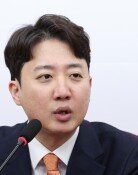Global competition over semiconductor industry
Global competition over semiconductor industry
Posted April. 06, 2021 07:48,
Updated April. 06, 2021 07:48
During the trilateral meeting of top security advisers from South Korea, the U.S., and Japan in Washington, D.C. last weekend, it is reported the American side mentioned the supplies of semiconductor chips as crucial security agenda. In the bilateral foreign ministerial meeting between Seoul and Beijing the following day, China expressed the hope to be partners with South Korea in the field of cutting-edge technology including semiconductors. It was an outright demand from the two strongest economies in the world that Korean chip makers “must stand behind” either Washington or Beijing.
A whopping 72% of global semiconductor chips are produced in the Asian region including South Korea and Taiwan. The share of major American players such as Intel or Qualcomm is merely 13%. While the Biden administration vowed to invest 50 million dollars (approximately 56.4 trillion won) in semiconductor industry and Intel embarked on foundry investments, it will take at least four to five years before production begins. During this vacuum of time, they desperately need a stable supply of chips from South Korea and Taiwan.
Such move from Washington will pose a director threat to Beijing. China is funneling tens of trillions of won in the semiconductor industry, but their technology is limited, with the self-sufficiency rate at a mere 16%. If the global chips market is realigned with Washington at the center of it, Beijing’s ambitious goal on the Cultivation of Eight New IT Industries might go thwarted. This explains why Beijing was so unabashed in pressuring Seoul and Taipei.
South Korean chip makers such as Samsung Electronics and SK Hynix that are responsible for 20% of the country’s entire annual exports volume are struggling amid the unprecedented uncertainties of international politics and security risks. The Korean chip makers have to bear the harsh brunt from other competitors on their own who are armed with government subsidies. American chip makers are enjoying a maximum 40% tax break on investment of semiconductor businesses, and European players are receiving 20 to 40% of their investments in the form of EU subsidies. The amount of corporate taxes that Samsung and SK Hynix have spent over the last three years were 27.3% and 23.7% of their net profits, much higher than those of Taiwan’s TSMC (11.4%) and Intel (16.7%). The South Korean government is imposing a handicap for the local chip makers that are faced with fierce international competition.
Competition over semiconductor chips is morphing into an international race, which requires an all-out effort for the country’s future. The gap is getting close, and other chip makers are chasing Korean players fast, while the local chip makers are faced with a long way to go for the dominance of system semiconductor market. It is important for Seoul to moderately meet the demands from the bigger countries, but removing production facilities to foreign countries can cripple the local manufacturing industry. Now is the time to expand the R&D capacity and bolster our core strengths so as to provide substantial support for the local chip makers through communication.





![“한동훈, 정치생명 걸고 무소속 출마해 평가받는 것 고려할만”[정치를 부탁해]](https://dimg.donga.com/c/138/175/90/1/wps/NEWS/IMAGE/2026/01/19/133186982.1.jpg)

